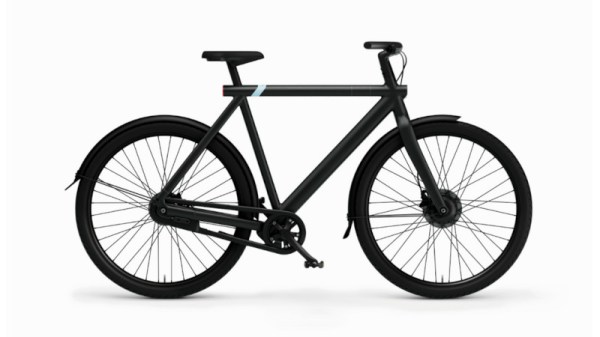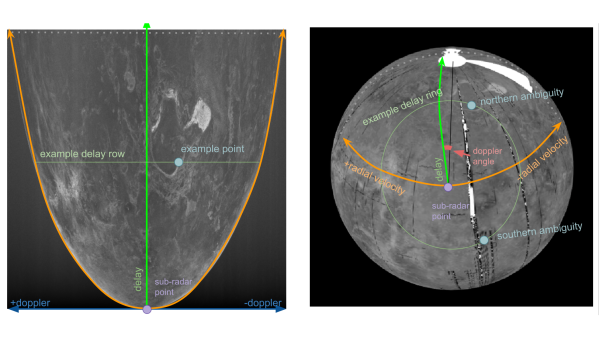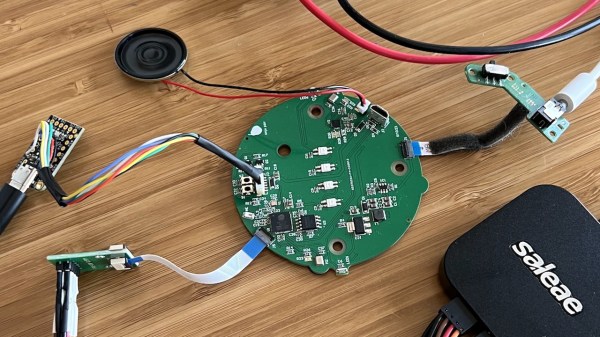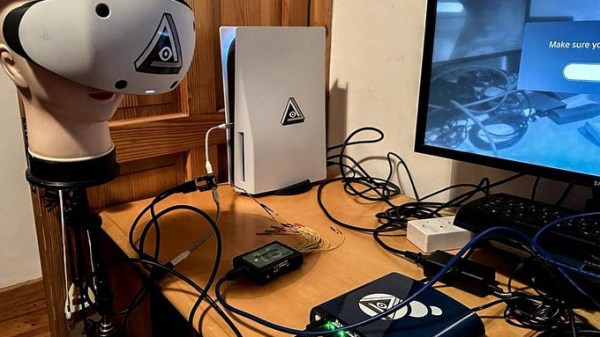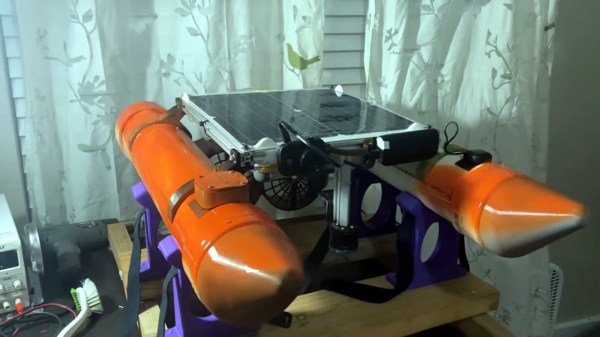It may be midwinter in Perth, but people still go to the beach there, which led to the surprising discovery earlier this week of what appears to be a large hunk of space debris. Local authorities quickly responded to reports of a barnacle-encrusted 2.5-m by 3-m tank-like object on the beach. The object, which has clearly seen better days, was described as being made of metal and a “wood-like material,” which on casual inspection is clearly a composite material like Kevlar fibers in some sort of resin. Local fire officials teamed up with forensic chemists to analyze the object for contamination; finding none, West Australia police cordoned off the device to keep the curious at bay. In an apparently acute case of not knowing how the Internet works, they also “urge[d] everyone to refrain from drawing conclusions” online, which of course sent the virtual sleuths into overdrive. An r/whatisthisthing thread makes a good case for it being part of the remains of the third stage of an Indian Polar Satellite Launch Vehicle (PSLV); reentry of these boosters is generally targeted at the East Indian Ocean for safe disposal, but wind and weather seem to have brought this artifact back from the depths.
VanMoof E-Bike Bankruptcy: The Risks Of Cloud-Connected Transport
When the bankruptcy of VanMoof, the company behind a series of e-bikes, was announced recently, many probably shrugged at this news. After all, what is an e-bike but a regular bicycle that has some electronics and a battery strapped to it to assist with cycling? Unfortunately for owners of a VanMoof e-bike, their fancy wheels come with a Bluetooth-connected smartphone app that somehow involves storing a special encryption key on the VanMoof servers, as detailed by [Gergely Orosz] at the Pragmatic Engineer. Without this key that is connected to your VanMoof account, your VanMoof app cannot communicate with your VanMoof e-bike.
Although basic functionality of the e-bike will be retained, features such as setting the gear modes, changing assistance mode, locking the bicycle and other features not exposed on the bicycle itself will be lost. Essentially this is the equivalent of losing the remote control to a modern-day TV and getting locked out of 90% of the device’s features.
Fortunately, as [Gergely] and others are (urgently) pointing out to VanMoof e-bike owners, this special key can be downloaded with a Key Exporter project on GitHub, as well as obtained and used with an alternative app by Cowboy Bikes, which is a competitor of VanMoof. The unfortunate reality remains, however, that should you lose this special key, you are going to be in a world of pain as your expensive e-bike now is mostly an e-brick.
(Thanks to [Jan Praegert] for the tip)
Amateur Estimates Of Venusian Day Using Arecibo Data
[Nathaniel Fairfield] aka [thandal] was curious about the actual rotation and axis tilt of Venus. He decided to spin up at GitHub Python repository to study the issue further, as one does. The scientific literature shows a wide range of estimates and variations for the planet’s rotation and axis tilt. He wondered if the real answer might be found in a publicly available set of uncalibrated delay-doppler images of Venus. These data were collected by the former Arecibo Observatory in Puerto Rico from 1988 through 2020. [Thanda] observed that the planet’s rotation appears to be speeding up slightly, and furthermore, his estimates of the orbital axis were within 0.01 degrees of the International Astronomical Union’s (IAU) values. [Note: Venus is a bit confusing — one planetary rotation, 243 Earth days, is longer than its year, 225 Earth days].
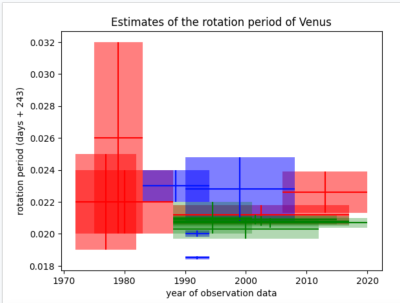
There’s a lot of interesting signal processing going on here. The Doppler-delay data consists of images that are 8091×8092 array of complex values, has to be mapped onto the Venus geoid. Then by using various surface features, one can compare their positions vs time and obtain an estimate of rotational speed and tilt. If these kinds of calculations interest you, be sure to check out [Thandal]’s summary report, and also take note of the poliastro Python astrodynamics library. Why is this important? One reason to better plan future missions.
Google Nest Mini Gutted And Rebuilt To Run Custom Agents
The Google Nest Mini is a popular smart speaker, but it’s very much a cloud-based Big Tech solution. For those that want to roll their own voice assistant, or just get avoid the corporate surveillance of it all, [Justin Alvey’s] work may appeal. (Nitter)
[Justin] pulled apart a Nest Mini, ripped out the original PCB, and kitted it out with his own internals. He uses the ESP32 as the basis of his design, since it provides plenty of processing power and WiFi connectivity. His replacement PCB also interfaces with the LEDs, mute switch, and capacitive touch features of the Nest Mini, for ease of interaction.
As a demo, he set up the system to work with a custom “Maubot” assistant using the Matrix framework. He hooked it up with Beeper, a messaging client that collates all your other messaging platforms into one easily-accessible place. The assistant employs GPT3.5, prompted with a list of his family, friends, and other details, to enable him to make calls, send messages, and handle natural language queries. The demo itself is very impressive, and we’d love to try setting up a similar assistant ourselves. Seeing two of [Justin’s] builds talking to each other is amusing, too.
If you’re more comfortable working with Google Assistant rather than dropping it entirely, we’ve looked at that kind of thing, too. Video after the break.
Continue reading “Google Nest Mini Gutted And Rebuilt To Run Custom Agents”
Closing In On A PC Enabled PSVR2
When the PlayStation VR2 headset was released, people wondered whether it would be possible to get the headset to work as a PC VR headset. That would mean being able to plug it into a PC and have it work as a VR headset, instead of it only working on a PS5 as Sony intended.
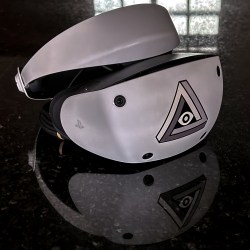 Enthusiasts were initially skeptical and at times despondent about the prospects, but developer [iVRy]’s efforts recently had a breakthrough. A PC-compatible VR2 is looking more likely to happen.
Enthusiasts were initially skeptical and at times despondent about the prospects, but developer [iVRy]’s efforts recently had a breakthrough. A PC-compatible VR2 is looking more likely to happen.
So far [iVRy] is claiming they have 6 DOF SLAM (Simultaneous Localisation and Mapping), Prox sensor, and stereo camera data.
Most of the juicy bits are paywalled behind [iVRy]’s Patreon. We’re hoping the jailbreak process will eventually be open-sourced.
The PS VR2 headset is quite unlike a PC VR headset in a number of ways, and it has not been historically easy to work with Sony’s products from a reverse-engineering perspective, whether it’s an attempt to improve the user experience of an annoying headset, or an attempt to understand the not-even-remotely-sanely-designed protocols behind the Sony Memory Stick. Getting the PS VR2 headset to work in a way it wasn’t intended was expected to be an uphill battle.
It’s not a finished job, but judging by the progress regularly shared on [iVRy]’s Twitter account, it might only be a matter of time.
Mapping The Depths With An Autonomous Solar Boat
Ever look out at a pond, stream, or river, and wonder how deep it is? For large bodies of water that are considered navigable, it’s easy enough to pull up a chart and find out. But what if there’s no public data for the area you’re interested in?
Well, you could spend all day on a little boat taking depth readings and making your own chart, but if you’re anything like [Clay] you could build a solar-powered autonomous robot to do it for you. He’s been working on the boat, which he calls Gumption Trap, for the better part of a year now. If we had to guess, we’d say the experience of designing and building it has ended up being a bit more interesting to him than the actual depth of the water — but that’s fine by us.
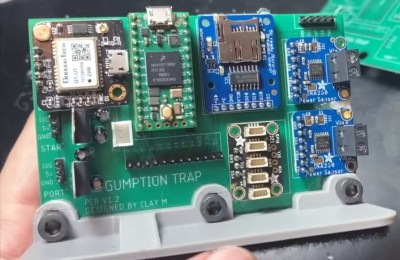 The design of the boat is surprisingly economical, as far as marine designs go. Two capped four-inch PVC pipes are used as pontoons, and 3D printed brackets attach those to an aluminum extrusion frame that holds the electronics and solar panel high above the water. This arrangement provides an exceptionally stable platform that would be all but impossible to flip under normal circumstances.
The design of the boat is surprisingly economical, as far as marine designs go. Two capped four-inch PVC pipes are used as pontoons, and 3D printed brackets attach those to an aluminum extrusion frame that holds the electronics and solar panel high above the water. This arrangement provides an exceptionally stable platform that would be all but impossible to flip under normal circumstances.
Around the back of the craft, there’s a pair of massive 3D printed thrusters, complete with some remarkably chunky printed propellers. The lack of rudders keeps things simple, with differential thrust between the two motors enough to keep the Gumption pointed in the right direction.
Continue reading “Mapping The Depths With An Autonomous Solar Boat”
Bridging A Gap Between LLMs And Programming With TypeChat
By now, large language models (LLMs) like OpenAI’s ChatGPT are old news. While not perfect, they can assist with all kinds of tasks like creating efficient Excel spreadsheets, writing cover letters, asking for music references, and putting together functional computer programs in a variety of languages. One thing these LLMs don’t do yet though is integrate well with existing app interfaces. However, that’s where the TypeChat library comes in, bridging the gap between LLMs and programming.
TypeChat is an experimental MIT-licensed library from Microsoft which sits in between a user and a LLM and formats responses from the AI that are type-safe so that they can easily be plugged back in to the original interface. It does this by generating JSON responses based on user input, making it easier to take the user input directly, run it through the LLM, and then use the output directly in another piece of code. It can be used for things like prototyping prompts, validating responses, and handling errors. It’s also not limited to a single LLM and can be fairly easily modified to work with many of the existing models.
The software is still in its infancy but does hope to make it somewhat easier to work between user inputs within existing pieces of software and LLMs which have quickly become all the rage in the computer science world. We expect to see plenty more tools like this become available as more people take up using these new tools, which have plenty of applications beyond just writing code.


